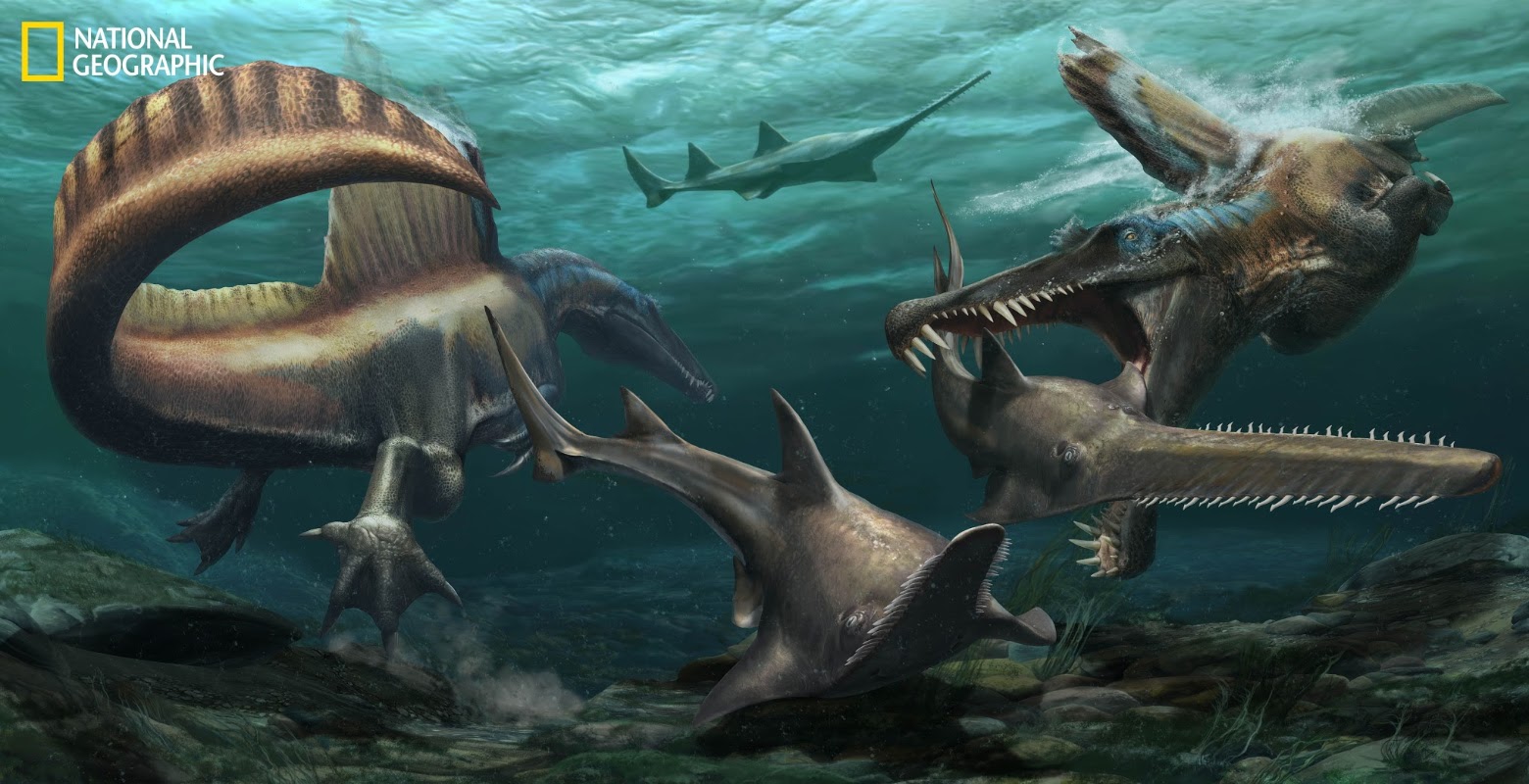National Geographic has exclusive visuals illustrating an important discovery that the Spinosaurus was aquatic. The longest predatory dinosaur known used tail-propelled swimming locomotion to hunt for prey in a massive river system.

Two Spinosaurus hunt Onchopristis, a prehistoric sawfish, in the waters of the Kem Kem river system in what is now Morocco. (National Geographic)
What is Happening:
- National Geographic Explorer and University of Detroit Mercy paleontologist Dr. Nizar Ibrahim led the team that tracked and created a fresh reconstruction of Spinosaurus in 2014.
- Their reconstruction revealed the creature was 50 feet long when fully grown — longer than an adult T. Rex.
- With the support of the National Geographic Society, Ibrahim and his team returned to Morocco in 2018 to put to rest the questions around their claim that Spinosaurus was semi-aquatic.
- Between 2015 and 2019, his team recovered many more fossils of the skeleton, including a remarkably complete, fin-like tail capable of extensive lateral movement and characterized by extremely long spines.
- With this paper published in the scientific journal Nature, it is confirmed that this new discovery changes our current understanding of dinosaur diversity in general and the Spinosaurus specifically.
For More Information:
- Subscribers can read the paper in Nature.
- Read the National Geographic article.
- See the exclusive National Geographic visuals.
- Read a kid-friendly version at the free NatGeo@Home hub.
